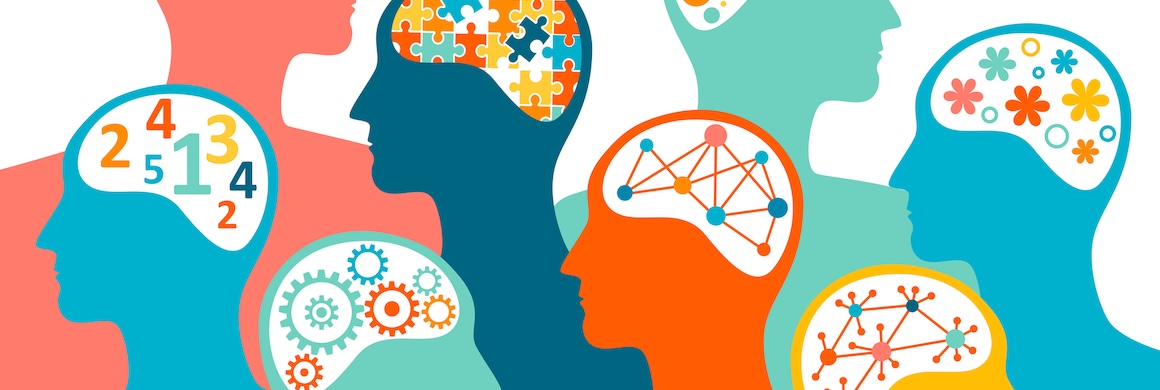Mental health issues are industry-specific and so too should be the solutions.
Over the last few years, the mental health of Australians has moved to the forefront of workplace policy, with companies seeking to invest more in staff wellbeing. Despite the progress, mental illness is still on the rise, with a higher proportion of working Australians reporting a mental illness this year than last [1]. A possible reason for this dissonance lies in the fact that each industry comes with a unique set of risks and demands that contribute to the mental health of staff, and a ‘one size fits all’ solution may not be the best approach.
So what do your industry stats say about staff mental health? And how can you use this information to tailor your mental health strategy?
Prevalence of various mental illnesses differs from industry to industry
There are a few factors which contribute to the risk and type of mental illness within working sectors, such as demographics, culture, workload, support, environment and safety [1] [2]. Such factors vary depending on job type, and a snapshot into your industry can provide clues to your employee’s wellbeing.
Construction workers are 2 times more likely to suicide than other Australians
Within the construction industry, more than one fifth of workers in the field are reported to have a mental health condition. A few specific issues are particularly prevalent, perhaps as a result of the predominantly male-dominated workplace culture which tends to promote a certain lifestyle, whilst simultaneously stigmatising mental illness [3]. Compared to other industries, substance use is most prominent within construction, with almost 13% of those in this sector experiencing a substance abuse condition and risky drinking – higher than the national average for both young and middle aged workers [4] [5]. Depression is also extremely common, with construction workers more than twice as likely to suicide, and apprentices 2.5 times more likely to suicide than other young men their age [3]. This data is in line with other heavily male-dominated industries such as mining and manufacturing.
Hospitality workers use illicit and prescription drugs more than those in any other industry
Affective conditions are most prevalent within the food and accomodation services industry, with recent surveys revealing 15% of workers in this field suffer from clinical depression [4]. Factors such as high staff changes, unsociable work hours, dealing with difficult customers as well as the casualisation of pay are stressors contributing to the prevalence of this form of mental illness [6]. As well as this, and similar to their counterparts in construction, substance abuse conditions are common within tourism and hospitality [7], due primarily to its availability in the workplace. One study found that employees in this industry use illicit and prescription drugs more than any other sector [8].
Almost 1 in 5 workers in the media, marketing & creative industries show signs of severe stress
Within the media, marketing and creative industries, anxiety conditions are the most prominent, with 29% more showing symptoms of mild to severe anxiety than the national average [9] and 18% generally showing signs of severe stress. Depression also remains quite high within the sector, with 20% more workers diagnosed compared to the wider community. Factors such as job satisfaction, stress/pressure, limited amount of social connections and overworking have all been contributed to this statistic [10], often leading to burnout.
44% per cent of workers in the financial & insurance sector claim to have left a job due to high stress
Overall, mental illness has the highest prevalence in the financial and insurance industry, with a third of workers experiencing a mental health condition [4], anxiety being the most prominent. Recent surveys suggest that almost half of the sector experience high stress in their day-to-day lives, from workload, the highly competitive nature of the sector, as well as lack of managerial support. This has led to 44% claiming they have left a job altogether [11].
Continued exposure to distressing situations in the health & aged care sector has increased mental illness amongst employees
Particularly relevant after the COVID-19 pandemic, mental illness within the health and aged care industry has been on the rise, namely around depression, anxiety, PTSD, as well as insomnia [12] [13]. Due to overstretched services, inadequate staff availability, the physical work environment, as well as exposure to distressing situations, 70% workers in this industry have been shown to experience psychological distress during the job [14].
Tailoring your mental health strategies can reduce the likelihood of mental illness
Whilst offering general mental health programs within the workplace is a great start to managing staff wellbeing, identifying the key stressors, risk factors and mental health conditions within your industry, and tailoring the approach around this, has been shown to have the greatest impact on overall mental health [15] [9]. For example, implementing drug and alcohol programs in the construction sector, running Managing Difficult Customer workshops for food and accommodation workers or running cultural change programs or coaching services within the financial and insurance industry targets the underlying risks associated for your staff, ultimately aiding their mental health longer term.
With all considered, it’s important to note that these are generalised overviews of your industry and such statistics and risk factors can differ from company to company. As you begin to implement further mental health strategies in the workplace, it’s important to have open discussions with your staff and assess how you can further personalise your internal approaches to create a safe place for your employees.
REFERENCES
[1] Superfriend. (2021). Workplace National Report 2021. https://itw2021.superfriend.com.au/#ReadIndustryPage
[2] Vitality Works. (2019). High-Risk Industries & Demographics for Poor Mental Health. https://vitalityworks.health/vitality-services/high-risk-industries-demographics-of-poor-mental-health/
[3] Chess Connect. (2022). We Need to Talk about Mental Health in the Construction Industry. https://chessconnect.org.au/mental-health-construction-industry/
[4] PWC (March, 2014). Creating a mentally healthy workplace. Return on investment analysis. https://www.headsup.org.au/docs/default-source/resources/beyondblue_workplaceroi_finalreport_may-2014.pdf?sfvrsn=6
[5] Safety Solutions. (2020). Risky drinking in construction: a 2020 Australian study. ??https://www.safetysolutions.net.au/content/drug-alcohol-testing/article/risky-drinking-in-construction-a-2020-australian-study-1505234620
[6] Goodman Fielder. (2019). Mental Health in Hospitality: How One Conversation Can Save a Life. https://www.gffoodservice.com.au/idea/mental-health-in-hospitality/
[7] Gates, P., Grove, R., & Copeland, J. (2013). Impact of substance use on the Australian workforce. Journal of Addiction & Prevention, 1(2), 1-6. https://research-management.mq.edu.au/ws/portalfiles/portal/22768713/Publisher_version_open_access_.pdf
[8] Belhassen, Y., & Shani, A. (2012). Hotel worker’s substance use and abuse. International Journal of Hospitality Management, https://bgu.ac.il/~yanivbel/pdf%20files/hotel_workers_substance_use.pdf
[9] Everymind. (2018). Results released from first major study into mental health and wellbeing of Australian media, marketing and creative industries. https://everymind.org.au/news/results-released-on-first-major-study-into-mental-healthy-of-australian-media-marketing-and-creative-industries
[10] Tynan, R., & Thienel, R. (2018). Mentally Healthy 2018: A Study into the Creative, Media & Marketing Industry. Never Not Creative, Everymind & UnLtd, https://everymind.imgix.net/assets/Uploads/Mentally-Healthy-2018-Summary-of-Key-Findings.pdf
[11] Pike, R. (2018, Jul 12). Mental health a problem for finance industry. Australian Broker. https://www.brokernews.com.au/news/breaking-news/mental-health-a-problem-for-finance-industry-252256.aspx
[12] Cabarkapa, S., King, J. A., & Ng, C. H. (2020). The psychiatric impact of COVID-19 on healthcare workers. Australian Journal of General Practice, 49(12). https://www1.racgp.org.au/ajgp/2020/december/the-psychiatric-impact-of-covid-19-on-healthcare-w
[13] Dobson, H., Malpas, C., Burrell, A. J. C., Gurvich, C., Chen, L., Kulkarni, J., & Winton-Brown, T. (2020). Burnout and psychological distress amongst Australian healthcare workers during the COVID-19 pandemic. Australasian Psychiatry, 29(1). https://journals.sagepub.com/doi/full/10.1177/1039856220965045
[14] Woodley, M. (2022, Jan 10). Demand soars for mental health support among healthcare workers. NewsGP. https://www1.racgp.org.au/newsgp/professional/demand-soars-for-mental-health-support-among-healt
[15] Mental Health Foundation. (2020, October 9). Workers need a tailored approach to mental health, study finds. Iosh Magazine. https://www.ioshmagazine.com/2020/10/09/workers-need-tailored-approach-mental-health-study-finds










